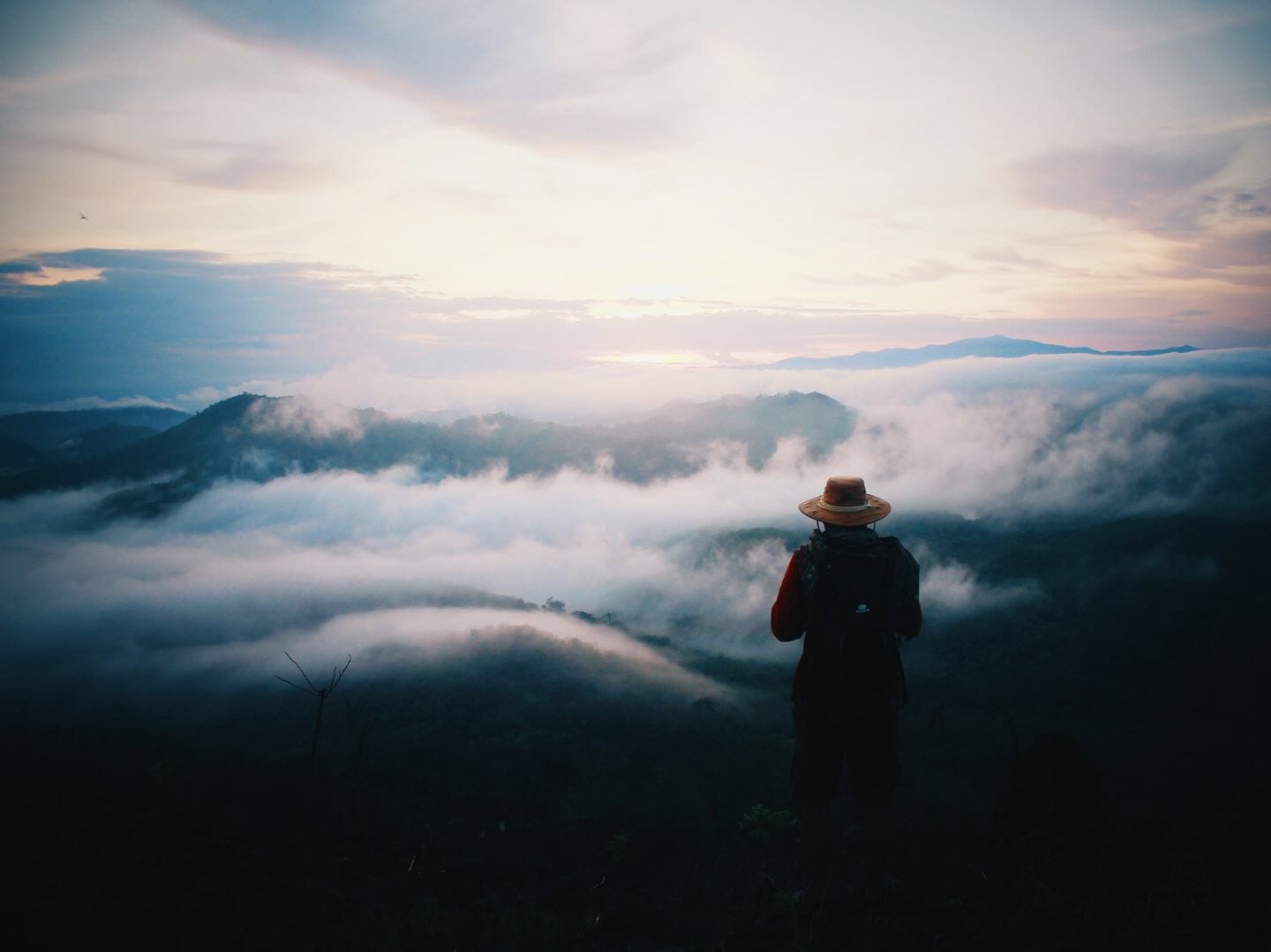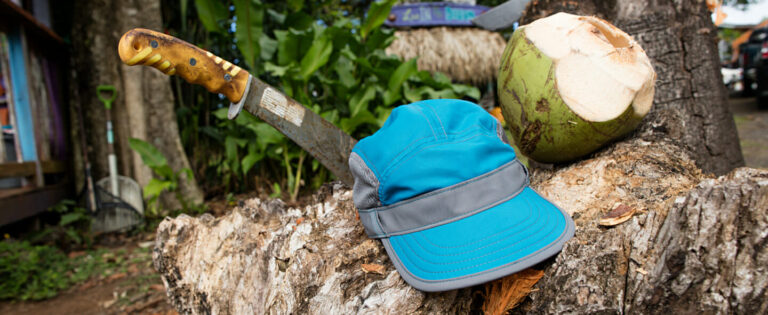If you’ve already conquered a mountain, then you’ve probably heard this sentence before: “Whew, the air is getting thin up here…” This isn’t noticeable on a classic hill walk or via ferrata but you’ll notice it whilst mountaineering at altitudes between 3,000 and 4,000 metres. The air isn’t necessarily getting “thin”, but rather the number of oxygen molecules per litre of air volume decreases the higher you go. So, there’s a decrease in atmospheric pressure. As a result, your body will want to fight this and you’ll notice that both your breathing speed and pulse have increased. So, if you want to prepare for mountaineering, an expedition or longer stays at high altitude, then altitude training is recommended. This training leads to an increase in the number of red (oxygen-transporting) blood cells in your body.
What is „altitude training“?
The definition is as follows: “Altitude training is the targeted use of an undersupply of oxygen (hypoxia) to the organism as a stimulus to increase performance”.
When should you start altitude training? And when will you notice its effect?

Whether you plan on conquering the Kilimanjaro, Denali or Mount Everest in the Himalayas, a tour at high altitudes should always be carefully planned and prepared. Both your equipment and physical fitness will play a major role in your success. So, to prepare your body for the special conditions at high altitudes, we recommend you follow an altitude training program before going on your tour. In addition, the effects of “thin air” can be very diverse. For example, when it comes to endurance sports, altitude training has been known to increase performance. Plus, acclimatisation has long been used in mountaineering.
At an altitude of 2,000 m, the “thin air“ begins to have an effect on your body. At this height, both sensitive and previously ill people will already experience their first symptoms of altitude sickness. The severity of the symptoms of acute mountain sickness (AMS) depends on several factors, such as: how physically fit you are and how good your general health is. In addition, some individuals may acclimatise faster than others with the same physical fitness level simply based on their genetics. Experience may also be a deciding factor. Whilst ascending a mountain or trekking at high altitudes, you should take into consideration both the speed of the ascent and the possibility of requiring additional days for acclimatisation.
Regardless of the altitude, the oxygen concentration in the air is at 20.9% all over the world. However, the atmospheric pressure decreases as your altitude increases, while the partial pressure of oxygen decreases too. As a result, this can lead to an lack of oxygen to the body (hypoxia). You can find important information about altitude sickness in this article.
Does altitude training really improve performance?
Journeying at high altitudes leads to an adaptative process in the body due to the reduced supply of oxygen. These include a sensitisation of respiratory activity, i.e. breathing, just like when the body is under stress. In addition, the release of the body’s own hormone erythropoietin (EPO) is also stimulated. EPO is produced in the kidneys and takes care of the formation of new red blood cells in the bone marrow. At the same time, the body increases the amount of haemoglobin available. Haemoglobin binds oxygen and has a positive effect on endurance by increasing the transport capacity of oxygen in the arterial blood.
Plus, several studies have come to the conclusion that physical exertion under hypoxia leads to changes at the muscular level, such as the increased enzyme activity of the energy metabolism. An increase in the muscular oxygen store, myoglobin, was also observed.
All in all, altitude training is perfectly suited for performance-oriented athletes who want to improve their endurance under controlled conditions. In case you didn’t know, altitude training has already been included in the training plans of endurance sports, long-distance running, triathlon and cycling athletes. However, even ambitious mountaineers who want to prepare for a high mountain ascent can improve their performance through altitude training.
Which form of altitude training is the most effective and useful?
In order to achieve the positive effects of your training for improved endurance performance, it’s important that a training stimulus is set under the same altitude conditions. Because simply staying at a high altitude without a specific training stimulus does not bring any significant benefits to improve your performance. So, there’s no use spending a few days in a hut in the Alps and playing cards all day. Running, hill walking and climbing at high altitudes is therefore necessary to achieve your goals.
How long does altitude training take?
Many experts and physicians have different opinions on this topic. A minimum stay of one week to ten days (after sufficient adjustment) is required for maximum efficiency, i.e. to be able to carry out performance-enhancing training. However, stays of three to four weeks would be ideal. In addition, top athletes often attend altitude training camps several times a year. But, this isn’t practical or even necessary for an amateur athlete as it’s so time-consuming. And in general, targeted altitude training over seven to ten days can already lead to the aforementioned positive effects for many athletes. There are even special providers who not only organise high altitude training camps but also provide medical care and give advice to the participants.
How long do the effects of altitude training last?
The duration of both the training’s effects and the adaptation remain controversial in the field of science. The first few days after a longer stay at high altitudes involves a regeneration phase, which means that you should reduce both the amount of training and its intensity. You may even notice a drop in your performance at first, so a short break can help you get back on your feet. Various studies have come to the conclusion that the effect of good altitude training lasts between three and five weeks and probably even longer. Red blood cells (erythrocytes) only live in the body for a maximum of 120 days. As a result, the effects cannot last more than 4 months.
Training with an altitude mask and in an altitude tent
With technical aids, altitude training can be carried out without mountains, be it in the city or at home. There are several products on the market, such as masks or tents that can be used for training that simulate “artificial hypoxia”. For example, a person may ride a bicycle ergometer and breathe through a special mask to simulate reduced oxygen conditions. There are also tents that can be set up on your bed and will simulate sleeping in hypoxic conditions. Some cities now have altitude training centres that provide special training rooms in hypoxic conditions and can therefore also simulate altitude training.
Since every person reacts differently to altitude and some people even suffer from altitude sickness, it makes sense to check your tolerance before going on your mountaineering adventure. A medical check should be carried out before starting your long, high-altitude journey, as well as before simulated altitude training. So, if you’re preparing for an expedition or high-altitude trek, training in special hypoxic chambers can be quite useful.
Is altitude training harmful? Is it a form of doping?
A long stay at high altitudes always puts a physical strain on the body, unless you were born and raised in regions at an altitude of 4,000 metres and above. So, attending an altitude training camp is therefore recommended and should be planned carefully. Otherwise, you may drain your body rather than increase your fitness level. In addition, altitude training is not considered doping and is allowed before competitions. In contrast to doping with drugs or forbidden substances, the athlete only utilizes the natural effects of altitude during altitude training. As a result, both the body’s own processes and adaptation are exerted without the use of substances.
Is altitude training also useful for recreational athletes?
A well-planned altitude training session can be very useful for recreational athletes and hobby alpinists. But it’s important to consolidate your own endurance performance and ensure that it’s at a good level beforehand. In other words, you should do sports, run and hill walk on a regular basis for a few years before considering an altitude training camp. A good state of health along with some training experience are necessary to achieve a positive effect.
For recreational athletes, we recommend not going too hard with the training right off the bat and not to work at maximum intensity straight away. Your condition will improve with time and your body will then be able to take on more ambitious training targets.
A summary of altitude training
In conclusion, altitude training can be used to improve performance in popular sports under certain conditions. On the other hand, on trekking tours in high altitudes on the Andes, mountains in the Himalayas or even on the 4,000 m peaks in the Alps, it makes a lot more sense to reduce the symptoms of acute mountain sickness or to possibly even eliminate them in advance. Finally, your training goal should be specific and strategic; a simple stay at high altitudes is not enough to achieve meaningful adaptation effects.
If you want to learn more about altitude sickness and its prevention, we recommend this article.







